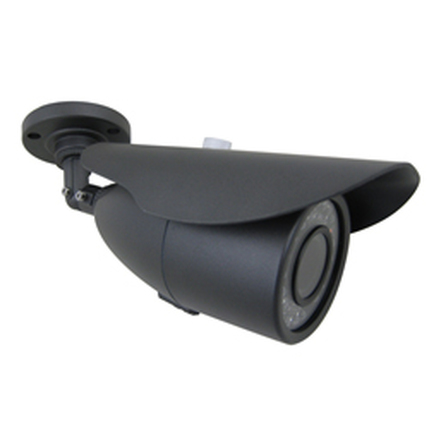Chester Township
The oldest settlers in Chester Township came in 1640 when "Black River" established itself as a settlement primarily because of the intersection of two Lenape Indian trails. These old trails, used for hundreds of years by the native Americans were traversed by the early settlers to go to all regions of New Jersey.

The first permanent European settlers arrived in Black River around 1720. They came mostly from Long Island to "the Landing" in New Brunswick and then overland on the "Grate Road" west to Roxbury. By 1740, the area of Black River was well established with settlers who had land grants from the King of England. The first residents farmed, operated mills, and distilled whisky from apples and peaches. The native Americans began to disappear, although evidence of their activities and settlements can still be found on various hillsides near the River.
The "Grate Roads," one from New Brunswick to the "Suckasunny Plains" and the other from Morristown to Phillipsburg crossed where in the center of Town where the Publik House now stands. These roads influenced the early growth of Chester Township as an agricultural community. Flax, wool, cattle, applejack, and peach whisky where important "exports" from Chester Township, and the two "Grate Roads" were the means to move goods out, as well as to bring staples back to Chester. Inns and Taverns were built to accommodate the drovers, notably the Hull-Brown Tavern at Furnace and Pleasant Hill Roads (private residence) and Jacob Drakes Union Hotel at the Crossroads which flourished from 1779 to 1962 when it burned. Fairclo's tavern was established in the village across from the present location of the Publik House.In the years leading to the revolution and on into the early 1800's, Chester Township was an important stagecoach stop on the trip from New York, New Brunswick, and Morristown to Phillipsburg. In 1799, Chester Township with 30 square miles, incorporated and separated from Roxbury Township. The Publik House was built in 1810 as a place of "fancy" public accommodations, although there were still many Inns and Taverns that took in drovers and itinerants. Main Street grew around these village Inns, and businesses were established. The smooth Washington Turnpike replaced the bumpy old Indian trail west from Morristown.
The "Grate Roads," one from New Brunswick to the "Suckasunny Plains" and the other from Morristown to Phillipsburg crossed where in the center of Town where the Publik House now stands. These roads influenced the early growth of Chester Township as an agricultural community. Flax, wool, cattle, applejack, and peach whisky where important "exports" from Chester Township, and the two "Grate Roads" were the means to move goods out, as well as to bring staples back to Chester. Inns and Taverns were built to accommodate the drovers, notably the Hull-Brown Tavern at Furnace and Pleasant Hill Roads (private residence) and Jacob Drakes Union Hotel at the Crossroads which flourished from 1779 to 1962 when it burned. Fairclo's tavern was established in the village across from the present location of the Publik House.In the years leading to the revolution and on into the early 1800's, Chester Township was an important stagecoach stop on the trip from New York, New Brunswick, and Morristown to Phillipsburg. In 1799, Chester Township with 30 square miles, incorporated and separated from Roxbury Township. The Publik House was built in 1810 as a place of "fancy" public accommodations, although there were still many Inns and Taverns that took in drovers and itinerants. Main Street grew around these village Inns, and businesses were established. The smooth Washington Turnpike replaced the bumpy old Indian trail west from Morristown.
|
Infrared Camera Specifications
|
Dome Infrared Vandal Resistant Camera Specifications
|
here is a range of housing units that have been constructed over a number of years in Chester Township. The construction of these housing units was done from before the period of 1939 until 2005. In the period of 1939 or so, 12.86% of the housing units were formed. In all the years, this time period was the one when the largest percentages of housing units were built. However, after this period, the number of houses that were built started to diminish.
In the years 1940 and 1949, 5.26% number of houses were constructed. Also, the 8.71% number of houses was formed in the years ranging from 1950 and 1959. This percentage was lowered down to a sum of 14.59% housing units created in the years 1960 to 1969.
However, in 1970 to 1979 there was a slight increase to 12.90% followed by a larger rise of 19.08% in the time period of 1980 and 1989. This increase in numbers persisted in the time period of 1990 to 1994 making a total of 5.41% development in housing units, till it reached the peak since 1939.
However, there was again a huge reduction in the numbers of housing units in the time frame of 1995 to 1998. In this period only 7.26% units were built in Chester Township. Moreover, there was an additional decline of 13.93% housing units constructed between 1999 and 2000.
In the years 1940 and 1949, 5.26% number of houses were constructed. Also, the 8.71% number of houses was formed in the years ranging from 1950 and 1959. This percentage was lowered down to a sum of 14.59% housing units created in the years 1960 to 1969.
However, in 1970 to 1979 there was a slight increase to 12.90% followed by a larger rise of 19.08% in the time period of 1980 and 1989. This increase in numbers persisted in the time period of 1990 to 1994 making a total of 5.41% development in housing units, till it reached the peak since 1939.
However, there was again a huge reduction in the numbers of housing units in the time frame of 1995 to 1998. In this period only 7.26% units were built in Chester Township. Moreover, there was an additional decline of 13.93% housing units constructed between 1999 and 2000.

